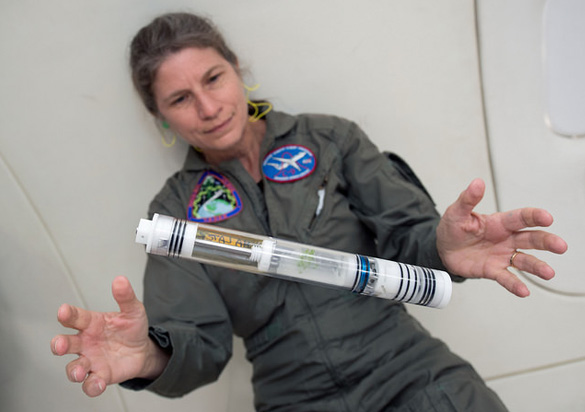Horticultural sciences professor named president-elect to space research society
University of Florida Genetics Institute member Anna-Lisa Paul, PhD, has been named president-elect of the American Society for Gravitational and Space Research. The ASGSR is a collection of international researchers dedicated to promoting the study of “how living organisms and physical systems respond to gravity.”
Paul is a professor in the department of horticultural sciences. Her term with the ASGSR is for three years. She and Director of the Interdisciplinary Center for Biotechnology Research Robert Ferl, PhD, conduct research together studying the effect of space flight on plant growth.
“Anna-Lisa is a great choice to lead the ASGSR,” Ferl said. “She is broadly experienced in the space life sciences, with enormous involvement in space shuttle and International Space Station experimentation to inform her science judgment.”
Paul has been a member of the organization since the 1990s, and has served on the governing board twice. She also serves as editor-in-chief of the organization’s journal.
After a year of shadowing the current president, Paul will head the 500-member organization for a year, before transitioning to the position of “past-president.”
“The goal is to bring together people in the scientific community who all work all sort of scientific research that deals with space flight, but also with gravitational sciences that are on the ground,” Paul said.
One of the organizations’ methods of outreach involves promoting policy to Washington and NASA headquarters. Paul said they will take a trip to the Hill in the spring.
“She has been a strong presence on the Hill and at NASA headquarters, where her science credentials and her interaction skills unite to make an effective case in support of this research community,” Ferl said.
For the past few years, the space program has been undergoing a period of transition. Budget cuts ended the shuttle program, reducing the number of research projects like Paul’s. Even so, the International Space Station, and outer space, are still there.
“As president, Dr. Paul will be leading the society as its community grapples with the potential end of the ISS era, and the birth of commercial spaceflight, especially in low earth orbit,” Ferl said. “These two things create an exciting and challenging venue for community evolution and growth, an opportunity that will be enhance by her leadership.”
One ambition she has for her term is to encourage utilization of suborbital vehicles. While they do not simulate the conditions of deep space, they do provide the experience of low Earth gravity during the transition from Earth’s gravity into microgravity.
“What I’d like to see is to help people think about what can we do next?” Paul said. “The other thing is, on the complete other end of the spectrum, we want to go to Mars.”
But that’s not going to happen overnight. Until then, researchers can focus on testing new exploration platforms for leaving behind low Earth orbit to explore cis-lunar space (deep space near the moon).
“What I can do as president is help educate and galvanize interest in some of those next generational kinds of things,” Paul said.


